Got your pass ready?
Let’s start our exploration of the Metro at the waterfront. A ship symbolizes the green line, at one time alternatively named the Linha Caravela. Although I can’t confirm this theory, I believe Metro officials adopted dual names as a navigation aid for the 1998 World Expo: four lines, four colors, four symbols. Text references to these navigation aids have been abandoned, but their symbols still decorate signage.
Linha verde station names are in bold below, followed by the tile artist & year of installation. Red asterisks (✱) mark my three recommendations for this line. If a station contains more than one artist, both are shown. And remember that a complete list of Metro stations, respective artists & exact locations forms part of the Endless Mile guide Lisbon: Azulejos. Vamos embora!
✱ Cais do Sodré · António Dacosta, 1998
A series of giant rabbits running with a pocket watch allude to “Alice in Wonderland”. Text below reads “Estou atrasado” or “I’m late”… probably the feeling of many people when they arrive at this terminal station!
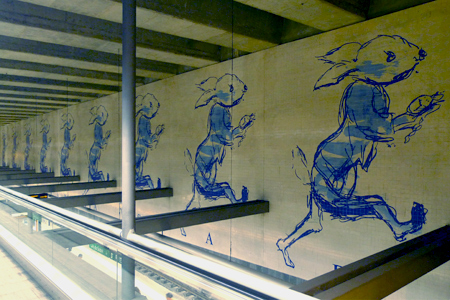
●
●
●
Baixa-Chiado · Ângelo de Sousa, 1998
A predominantly white & uniform station leads to gold, geometric designs at tunnel entrances. Butterflies? Icarus? You be the judge.

●
●
●
Rossio · Maria Keil, 1963
Our first Maria Keil of the series… She loved geometric patterns as well as stars, & this panel showcases both.
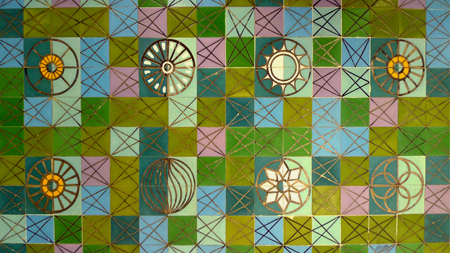
Rossio · Helena Almeida, 1999
Maria Keil knew that motion needed to be part of any public transportation artwork. Almeida took Keil’s abstract idea & made it literal with this walking woman.
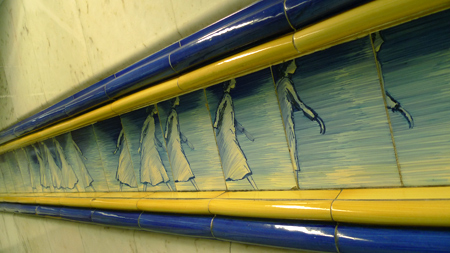
●
●
●
Martim Moniz · Maria Keil, 1966
Keil rarely used the same color palette, but these tiles have similar tones to the ones in Rossio.
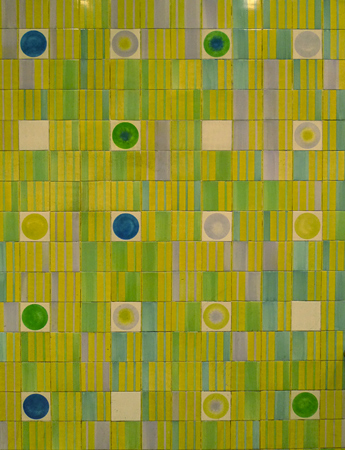
Martim Moniz · Gracinda Candeiras, 1997
Candeiras explained her art with a hand-written tile panel inside the station… find it! She refers to this spot in Lisboa as a meeting point of three peoples —both past & present— so these icons represent elements of Arab, Indian & African cultures.
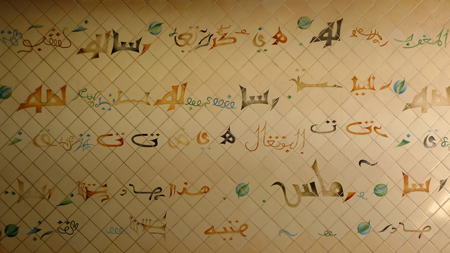
●
●
●
✱ Intendente · Maria Keil, 1966
In this station, Keil revived one of the oldest techniques for tile production: corda seca. Difficult to execute, artists use a thick line of linseed oil mixed with manganese to separate pigments for “dry cord” tiles. After firing, outlines turn dark black —similar to a children’s coloring book— which makes this technique easy to identify.
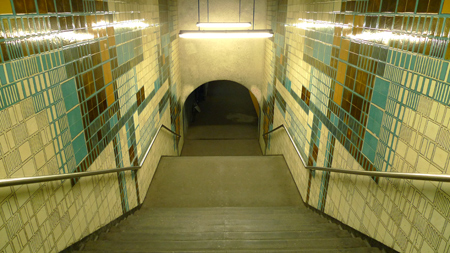
●
●
●
✱ Anjos · Maria Keil, 1966 & Rogério Ribeiro, 1982
Keil invited a fellow artist to collaborate on this station. She drew the seaweed while Ribeiro provided the underwater bubbles.
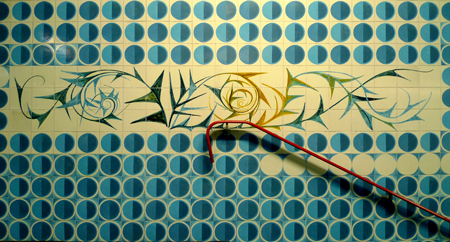
●
●
●
Arroios · Maria Keil, 1972
Simple but visually effective.
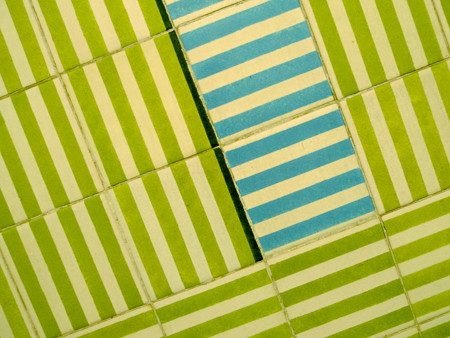
●
●
●
Alameda · Maria Keil, 1972
Probably one of her best motion motifs, series of one to four color strokes per tile help push transit users along.
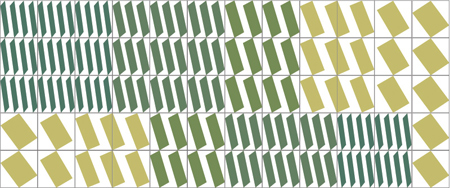
●
●
●
Areeiro · Maria Keil, 1972
These sine waves always remind me of the oceanside.
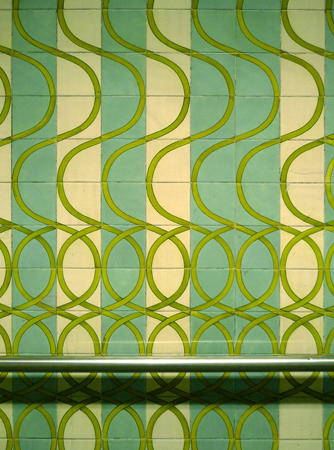
●
●
●
Roma · Maria Keil, 1972
Back to pure geometry. There’s a lot more going on here than it seems: pinwheels mix with large rectangular shapes.
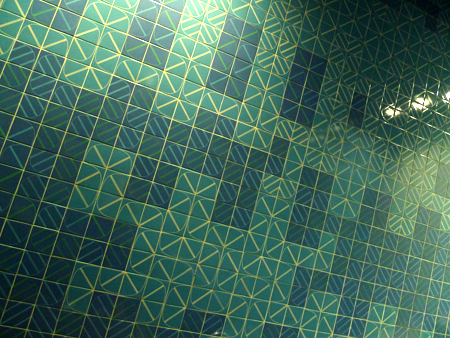
Roma · René Bertholo, 2006
Another famous 20th-century artist, Bertolo designed four panels for the expansion of this station. Houses & trees repeat themselves in various transformations just like Keil’s work often does.
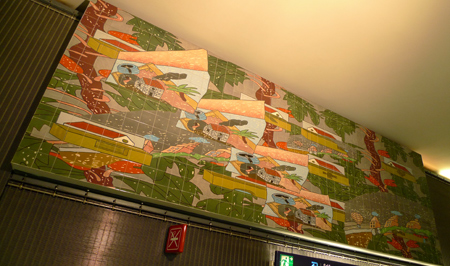
●
●
●
Alvalade · Maria Keil, 1972
Lilac & white swirls cascade down from the ceiling on a brownish background. One of Keil’s more complicated geometric designs.
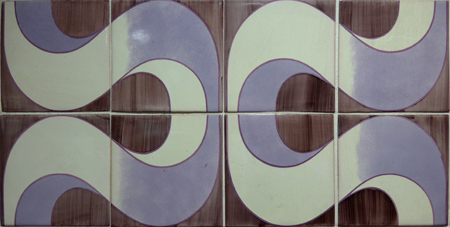
Alvalade · Bela Silva, 2007
For an expansion/renovation of this station, Bela Silva drew inspiration from the Portuguese folk tale “O macaco do rabo cortado” with images of animals, women & a bit of irony.
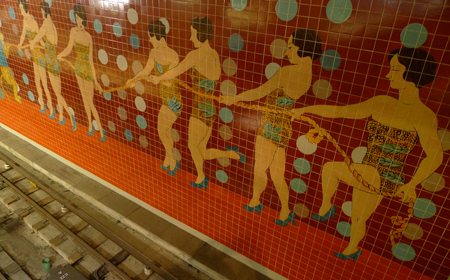
●
●
●
Campo Grande · Eduardo Nery, 1993
Nery knew how to create motion by breaking up figures, inserting color where least expected & being playful. In this station, he deconstructs the figura de convite, a trend from the late 18th century where life-size figures were placed at entrances to greet guests.
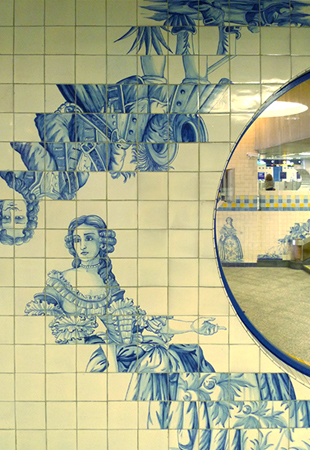
●
●
●
Telheiras · Eduardo Batarda, 2003
Born in Coimbra, Batarda studied in London & became an important figure in the 1960s art scene in Portugal. He decorated this station with low-relief tiles depicting arts & crafts tools.

Lisbon Metro, tile series: Basics • Linha verde • Linha azul • Linha amarela • Linha vermelho
